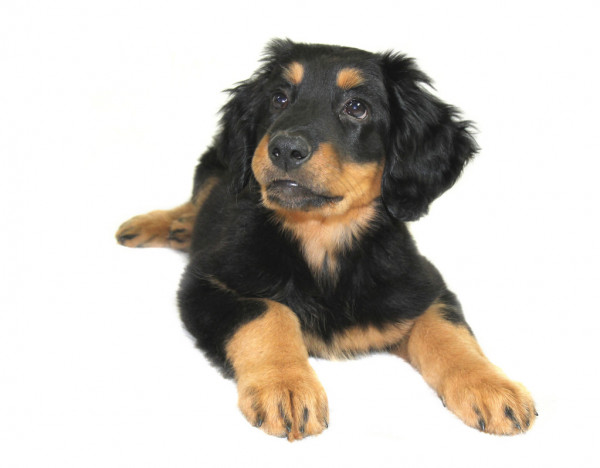
As the story goes, the Ordensritterburg castle of Germany was invaded by ill-tempered and completely rude Slavic invaders in the early 13th century. Being invaders, they did what most raiders of the day liked to do: They torched the place to the ground and slaughtered all the castle’s inhabitants save one: The infant son of the castle lord. He, too, would have perished had it not been for one of the castle’s Hovawarts. Despite being injured himself, the dog dragged the youngster to a neighboring castle where he was kept safe. That boy’s name was Eike von Repkow.
Years later, a notable figure in German law named Eike von Repgow (the very same) described the Hovawart in his law book named, Sachsenspiegel, and extolled its virtues. It was one of the first documented writings we have of the breed; Repgow also listed the Hovawart among the dogs one would have to replace and pay restitution if it was killed or stolen. Repgow later published the oldest Code of Law to survive from medieval Germany.
By the 15th century, Hovawarts were used and bred by barons from the Harz and Black Forest regions of Germany to protect their estates, castles, farms, and flocks. Indeed, Heinrich Mysinger recognized these dogs as one of “The Five Noble Breeds” in 1473, and wrote of their usefulness in hunting down thieves and bandits.
By the 1920s, however, the breed was nearly extinct, and would have vanished completely but for zoologist and breeder, Dr. Kurt Konig who began reconstructing the breed shortly after the First World War.
Konig’s search for dogs from the Herz and Odenwald areas that resembled the breed’s original description enabled him and a few other breeders to cross Hovawarts (and Hovawart-type dogs) with breeds thought to include the old German Shepherd dog, Alsatians, Kuvasz, Newfoundlands, and Leonbergers. Rigorous measures were taken in selecting breeding stock, but with diligence, dedication, and patience, the original working type was regained.
In 1922, the first “Hovie” litter was registered in Germany, and in 1937, the Hovawart officially was recognized by the German Kennel Club.
It was nearly all for nothing.
The breed’s versatility made it a favorite of the German army during WWII, and when thousands of dogs died during the war, the Hovawart was all but wiped out.
Once again, the breed needed resurrection, and as WWII neared its end, a breeder named Otto Schramm and fellow Hovawart enthusiasts worked hard to preserve the breed and form a new breed club, the Rassezuchtverein für Hovawart-Hunde Coburg which is still in existence today.
In 1964, the German Kennel Club recognized the Hovawart as the country’s seventh working breed. Hovawarts first appeared in the UK in 1980, and their numbers have been increasing slowly with about 310 dogs thought to be there. In 1982, a breed club was formed and it holds full Kennel Club recognition. The Hovawart is currently part of the AKC’s Foundation Stock Service.
As an aside, it’s in the translation of the Hovawart’s name that we find its primary purpose. From Middle High German: Hova = Hof (= yard, farm) and wart = Wächter (= watchman) – the watcher (or guardian) of property.
Image: Hovwart puppy/DepositPhotos
